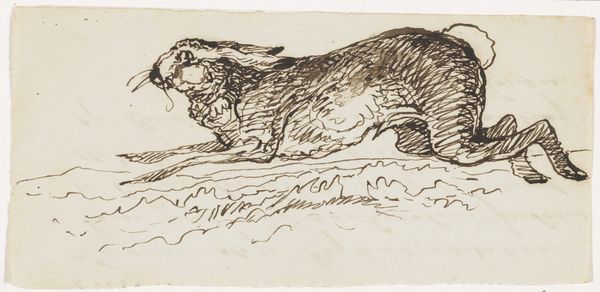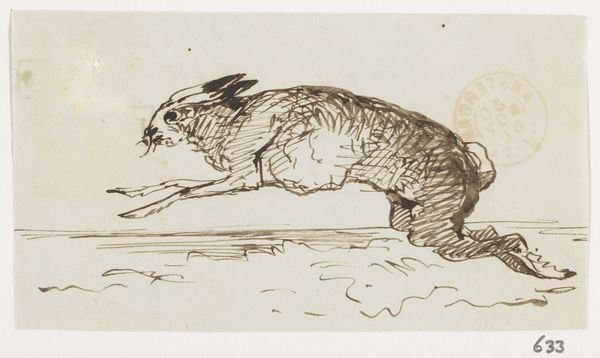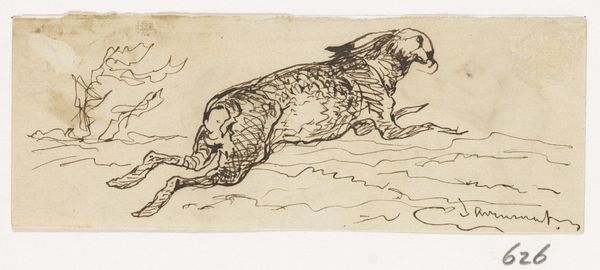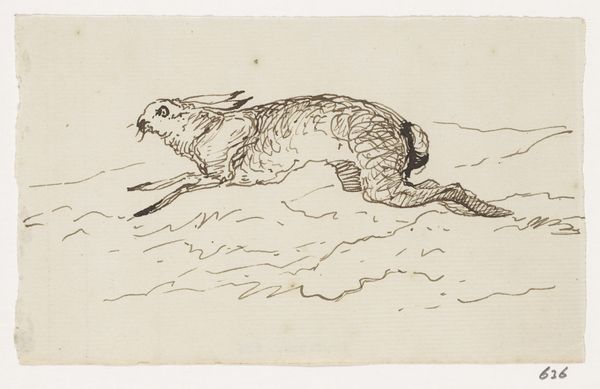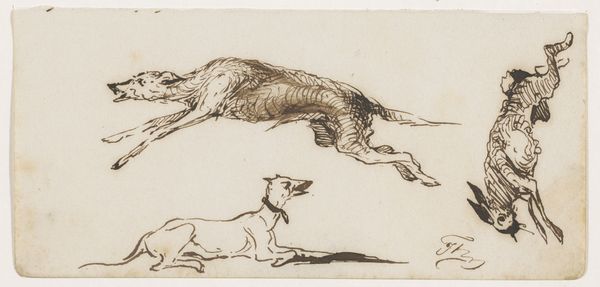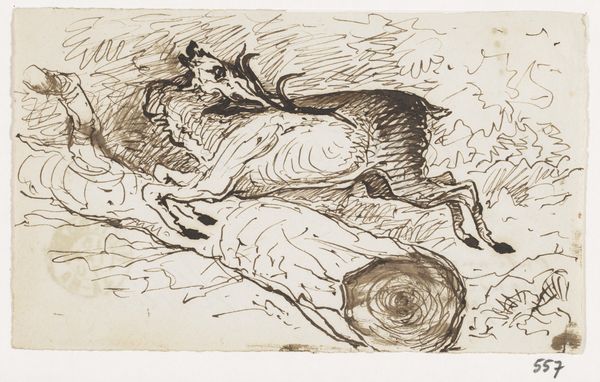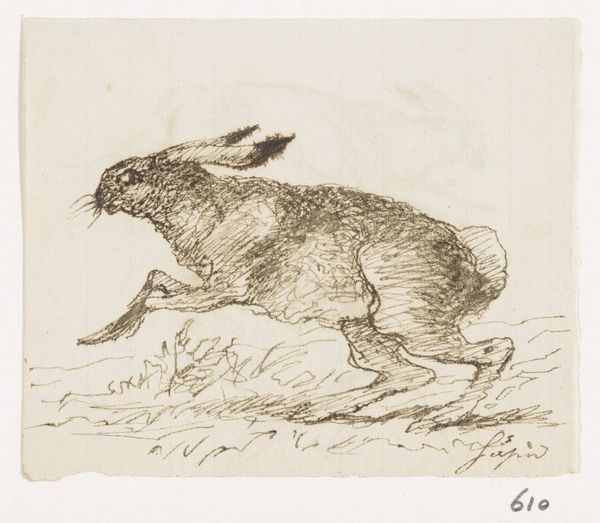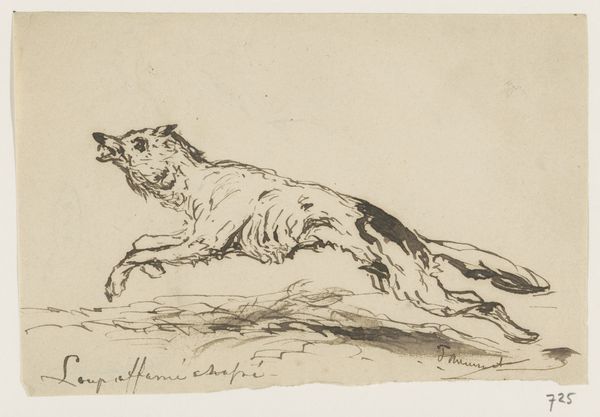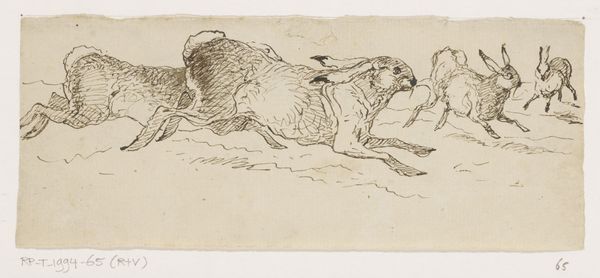
drawing, ink
#
drawing
#
ink drawing
#
animal
#
figuration
#
form
#
ink
#
line
#
realism
Dimensions: height 65 mm, width 111 mm
Copyright: Rijks Museum: Open Domain
Curator: Let's turn our attention to "Haas," an ink drawing created around 1869 by Johannes Tavenraat. It resides here in the Rijksmuseum collection. What are your initial thoughts on this swift little scene? Editor: My immediate response is of kinetic energy! The hare seems to burst right off the page. There's a palpable sense of urgency and flight, skillfully captured with minimal linework. Curator: Absolutely. Tavenraat, working within the traditions of realist animal representation, utilizes quick, suggestive lines rather than meticulous detail to depict this bounding hare. I see this and question the traditional narratives. How might gender roles and social power have played into 19th-century Dutch hunting practices and landscape representation of "nature"? It wasn’t always simply about sport but also societal power. Editor: That’s interesting to consider. Shifting away from symbolism, let’s examine the context in which it was shown or, even more interesting, *not* shown. Tavenraat was a landscape artist, and these images offered glimpses into an otherwise inaccessible world. These depictions were often viewed with social status tied into these visions of idealized life outside cities. Curator: A powerful point to explore how socio-political contexts affect our perspective. Returning to the hare itself, in folklore, rabbits symbolize vulnerability but also resilience. Their heightened senses offer the animal an escape route to change course even amid hunting season when their safety hangs delicately to exist solely for consumption whether for human/animal gain; to eat them if needed or risk starvation. How much more might an audience internalize this struggle during 19th-century times of socioeconomic distress amongst lower classes which fueled unrest/rebellion to claim power? Editor: Thinking about the consumption point that it might mirror exploitation in society - an astute reflection indeed!. It prompts the consideration how art history might have excluded a full account about economic status across differing demographics given a specific socio-economic status instead influencing both the style plus medium that many used during certain periods as reflections for or against their lived reality vs other demographic accounts such who didn't. Curator: The hare's survival is never guaranteed within that reality-- a point made starkly via what's shown while allowing many interpretive meanings! Editor: It does bring a certain weight while realizing nature wasn't idealized despite all its apparent splendor that makes even animal renditions like what Johannes offers to seem politically heavy without obvious intents given all things that factored when judging this artistic account..
Comments
No comments
Be the first to comment and join the conversation on the ultimate creative platform.

